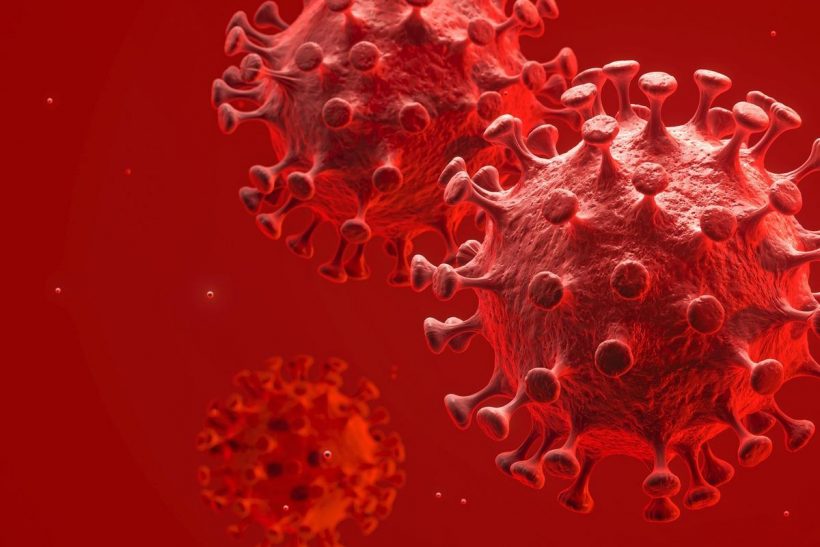The third year of the coronavirus disease 2019 (COVID-19) pandemic has disclosed newer issues like continued long covid symptoms and growing costs – measured in terms of lives and livelihoods lost (for example – education, mental health, and economies). Hence, global strategies to counteract future pandemics are warranted.

The study
A recent study published in Immunity focused on broad-spectrum immunity against viruses that harbor the potential for generating a pandemic involving humans, especially those with potential for zoonotic spillover and mutations that render variants of concern.
This study discussed the immunological approaches which can blunt the impact of another emerging virus pandemic, such as newer vaccine concepts that stimulate broadly protective antibodies as well as T cells.
Broadly Protective Antibodies
To begin with, antibodies that aid in protecting against multiple viruses must be recognized. A broadly protective vaccine is likely to identify a wider range of mutagenic substitutions. Since glycans may be essential for mutagen recognition, glycosylation should be considered for immunogen design.
Various proposed strategies include – blocking of highly variable antibody sites; inclusion of native glycosylation to enable recognition of desired sites, and deleting glycan during priming for the initial germline antibodies to take effect––thus, boosting glycosylated immunogens.
It is important to target sites that conserved the original sequence to facilitate recognition by antibodies. If we take the example of antibodies against previously endemic coronaviruses, those that target their fusion peptides also cross-react with the fusion peptides of severe acute respiratory syndrome coronavirus 2 (SARS-CoV-2).
Additionally, a receptor-binding site (RBD) that is shared by multiple viruses in the coronavirus family could serve as another conserved target. Moreover, vaccination strategies that aim to target rapidly evolving viral sequences will require sensitizing through multiple antigens (or portions of antigens) from different members of the virus family.
Meanwhile, breadth of recognition and potent neutralization by antibodies can be established via quaternary epitope recognition. For this, the recognition of multiple viral glycoprotein subunit recognition is necessary. Thus, vaccine strategies should introduce the right sequence and assembly of unstable proteins; this necessitates protein engineering.
Vaccination strategies need to incorporate priming with one form and boosting with another to generate more desired antibody responses. Display of antigens in the precise conformation and desired immunogen spacing will elicit IgG. These immunoglobulins naturally bridge monomers, bind avidly, and display Fc (receptors for immunoglobulins) for immune effectors cells.
Multivalent display of antigens by vaccines will stimulate IgG production that has both neutralizing and extra-neutralizing effects. Research has suggested that antibodies that bind avidly demonstrate more potent neutralization and wider recognition. Such antibodies can be stimulated by sensitization through whole glycoprotein oligomers instead of monomeric RBDs.
Broadly Protective T Cells
The display of multiple nanoparticles copies can help in enhancing reactions against desired, conserved, and weakly immunogenic epitopes. Desirable antibody functions include both, neutralizing and extra-neutralizing actions. Extra-neutralizing functions benefit by stimulating broadly reactive and protective T cell responses.
While the Fc-mediated functions vary amongst host species, the extra-neutralization functions correlate to improved survival after viral infection and constitute the major portion of the antibody response.
Of note, studies have revealed that broadly reactive antibodies show the highest Fc-mediated effect. These findings delineate that broadly-binding antibodies can be protective even though they are extra-neutralizing.
Breadth of antibody neutralization can be achieved by targeting the S2 subunit––despite its lower neutralization potency. Meanwhile, for other virus families, the vaccines must also identify more conserved subunits. Such antibodies are likely to protect humans irrespective of their neutralization potency.
Thus, a multi-component strategy can help in achieving broadly protective antibodies at the polyclonal level. However, the identification of immunogens that represent multiple strains or viruses within a family necessitates the engineering of viral antigens.
To soften the blow and combat the potential upcoming pandemic, exploration of newer vaccine strategies should be continued, particularly those that target broadly effective antibodies and generate wide-spectrum immune protection.
Furthermore, apart from focusing on mechanical neutralization, we must also implement immunogen engineering that aid in effective protection rather than disease prevention. Finally, numerous protective Fc-mediated functions must be exploited for enabling clearance and induction of complementary T cells.
In inference, broadly protective antibody strategies through vaccines, that induce T cells, are feasible and this concept can be deployed for preparing against potential future pandemics. These vaccine components may involve the inclusion of additional viral antigens, for instance – SARS-CoV-2 N, certain non-structural protein (NSP) antigens, fragment-rich T cell epitope-specific antigens, or defined T cell-epitope collections.
SARS-CoV-2 vaccines that include components beyond the spike antigen can broaden vaccine-elicited T-cell reactivity spectrum, for example – NantWorks/Immunitbio, Flowpharma, Gritstone, Walz group, and Vaxxinity. These T cell vaccines would help prevent severe disease, hospitalizations, and death. In fact, the proposed concept can be expected to be synergistic with the existent antibody-inducing strategies.
- Sette, A., & Saphire, E. (2022). Inducing broad-based immunity against viruses with pandemic potential. Immunity. doi: 10.1016/j.immuni.2022.04.010. https://www.cell.com/immunity/fulltext/S1074-7613(22)00181-9?_returnURL=https%3A%2F%2Flinkinghub.elsevier.com%2Fretrieve%2Fpii%2FS1074761322001819%3Fshowall%3Dtrue
Posted in: Medical Science News | Medical Research News | Disease/Infection News
Tags: Antibodies, Antibody, Antigen, Cell, Coronavirus, Coronavirus Disease COVID-19, covid-19, Education, Germline, Glycan, Glycans, Glycoprotein, Glycosylation, immunity, Mental Health, Nanoparticles, Pandemic, Peptides, Protein, Protein Engineering, Receptor, Research, Respiratory, SARS, SARS-CoV-2, Severe Acute Respiratory, Severe Acute Respiratory Syndrome, Structural Protein, Syndrome, T-Cell, Vaccine, Virus

Written by
Nidhi Saha
I am a medical content writer and editor. My interests lie in public health awareness and medical communication. I have worked as a clinical dentist and as a consultant research writer in an Indian medical publishing house. It is my constant endeavor is to update knowledge on newer treatment modalities relating to various medical fields. I have also aided in proofreading and publication of manuscripts in accredited medical journals. I like to sketch, read and listen to music in my leisure time.
Source: Read Full Article
